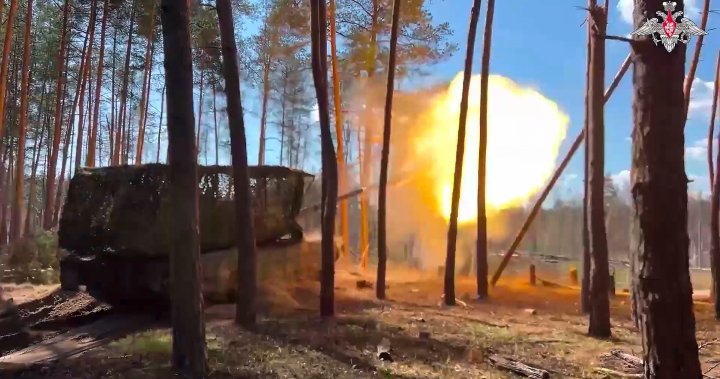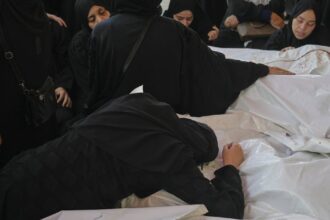Ukraine faced its most extensive drone assault since the war began as Russian forces launched over 188 attack drones across multiple regions overnight, marking a troubling escalation in Moscow’s aerial campaign. The massive bombardment, which Ukrainian officials called unprecedented in scale, targeted critical infrastructure and residential areas, stretching Ukraine’s air defenses to their limits.
“This is the largest drone attack on Ukraine since the full-scale invasion began,” said Ukrainian Air Force Commander Mykola Oleshchuk in a statement released early Thursday. “The enemy is clearly testing our air defense capabilities and searching for gaps in our protective shield.”
Ukrainian defense forces managed to intercept and destroy 76% of the incoming drones, according to military officials, but the sheer volume of the attack allowed dozens to reach their targets. Particularly hard-hit were energy facilities in the Dnipropetrovsk, Zaporizhzhia, and Sumy regions, where local authorities reported significant damage to power infrastructure and subsequent outages affecting hundreds of thousands of civilians.
The Ukrainian Energy Ministry confirmed that emergency repair crews were working around the clock to restore power, but warned that some regions could face extended blackouts as winter approaches—a frightening prospect with temperatures already dropping below freezing in parts of the country.
In Kyiv, residents spent nearly seven hours in bomb shelters as waves of Iranian-designed Shahed drones, which Ukrainian forces have nicknamed “mopeds” for their distinctive engine sound, circled overhead. The capital’s military administration reported that air defense units successfully neutralized more than 40 drones over the city, though falling debris damaged several residential buildings in the Shevchenkivskyi and Dniprovskyi districts.
“We heard them coming all night,” said Olena Kravchuk, 43, a Kyiv resident who spoke to CO24 News. “The sound is terrifying because you know what’s following—explosions, sirens, and uncertainty about whether your home will still be standing in the morning.”
Military analysts suggest this escalation represents a strategic shift in Russia’s approach as the war nears its third year. Rather than focusing solely on front-line military targets, Moscow appears to be systematically targeting Ukraine’s energy infrastructure ahead of winter, reminiscent of similar campaigns in previous years that left millions without heat and electricity during the coldest months.
“Russia is employing what we call a ‘pressure campaign’ through asymmetric means,” explained Dr. Anton Petrov, defense specialist at the Kyiv Institute for Strategic Studies. “Unable to make significant territorial gains on the battlefield, they’re aiming to break Ukrainian resolve by making civilian life unbearable.”
The drone assault follows a series of missile strikes earlier this week targeting power stations in Poltava and Kirovohrad regions, which resulted in emergency power outages across five oblasts. Ukraine’s energy system, already weakened by previous Russian attacks, remains vulnerable despite significant international assistance in bolstering air defenses.
President Volodymyr Zelenskyy responded to the attacks by reiterating his call for Western allies to accelerate the delivery of promised air defense systems and lift restrictions on using long-range weapons to strike military targets inside Russia. “Each delay in weapon deliveries to Ukraine results in more destroyed infrastructure and lost lives,” he stated during an emergency meeting of his war cabinet.
The Polish government confirmed it scrambled fighter jets to secure its airspace during the attack, highlighting growing concerns about the potential for the conflict to spill over into neighboring NATO countries.
As Ukraine braces for what could become a difficult winter under sustained aerial assault, the question remains: can the international community provide sufficient support to protect Ukrainian civilians from what appears to be an intensifying campaign against critical infrastructure, or will Russia’s strategy of targeting energy systems succeed in wearing down Ukrainian resilience as the war enters another year?


















